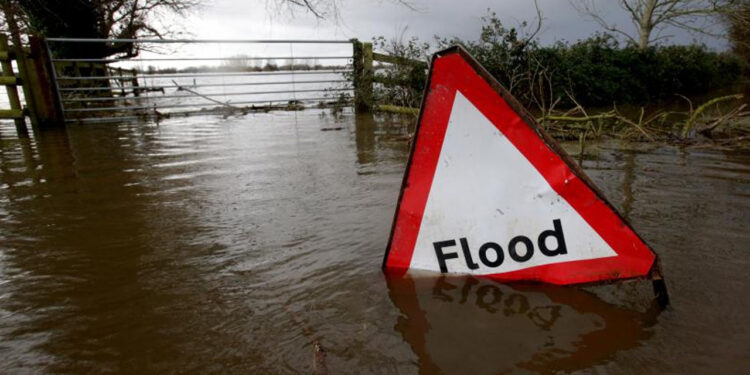Mustapha Ahmed, the Director General of the National Emergency Management Agency (NEMA), has taken decisive action in response to the controlled release of water from the Lagdo Dam in Cameroon into the Benue River.
Mr. Ahmed addressed a pivotal stakeholder meeting held on Wednesday, August 30, following a notification received from the Ministry of Foreign Affairs regarding the situation at the Cameroonian dam.

This important forum brought together leaders and representatives from a diverse array of organizations, including the Disaster Preparedness and Response Federation (DPRF), Nigeria Hydrological Services Agency (NIHSA), UN Office for the Coordination of Humanitarian Affairs (UNOCHA), National Bureau of Statistics (NBS), National Population Commission, Nigeria Security and Civil Defence Corps (NSCDC), Federal Road Safety Corps (FRSC), Institute of Peace and Conflict Resolution, Red Cross, and other relevant entities.
In his comments, the director general informed the gathering that Cameroonian authorities triggered a release of water from the Lagdo Dam into River Benue on August 14 at the rate of 200 cubic meters per second which is about 18 million cubic metres of water per day.
The DG also noted that even though the release of water is currently being modulated, the Cameroonian authorities may commence full discharge of excess water from the dam in the event of the region experiencing heavy amounts of rainfall. The modulated release notwithstanding, full discharge of excess water from the dam may result in all front-line states experiencing flooding in subsequent days and weeks.
With some states already experiencing flooding in parts of the country, the release from the Lagdo Dam has the potential to worsen the flood situation and Nigeria needs to take urgent proactive and preventive measures to address and mitigate the impact.
The ECF provided a platform for critical stakeholders to strategize and ensure that the release does not cause much negative impact on the low-lying communities along the states that could be affected.
Low-lying states on downstream of River Benue are Adamawa, Taraba, Benue, Nasarawa, Kogi, Anambra, Enugu, Edo, Delta, Rivers and Bayelsa.
The forum which emphasized the significance of coordination in disaster management adopted an interactive methodology that allowed for active engagement, knowledge sharing, discussions, and practical exercises, fostering a deeper understanding and commitment among the participants to the objectives of the event.
Information available from the flow level of the River Benue at the Nigerian Hydrological Service Agency (NIHSA) gauging station in Makurdi showed that water levels stood at 8.66 cubic meters on August 25th, 2023 compared to 8.3 cubic metres recorded on the same date in the previous year.
NISHA has also noted that the flow level of River Niger system, especially at Niamey, Niger Republic, remains stable at a normal level of 4.30 meters. Similarly, inland dams including Kainji, Jebba, and Shiroro reported consistent flow regimes.
The forum was informed that spillage rate was reduced to 4 million liters per day, equivalent to 50 cubic meters per second on the 24th of August and as of the most recent update, it was reported that spillage had ceased entirely due to the closure of the dam gates.
Nigeria has been dialoguing with Cameroon with regard to the dam and this led to the signing of a Memorandum of Understanding (MOU) on the 3rd of May, 2016. However, the MOU lacked explicit provisions outlining responsibilities and obligations for both parties. Consequently, a gap in effective communication and collaboration persists between the two nations on matters pertaining to water release. That is now being addressed.
Other long-term measures to mitigate against the yearly occurrence have seen initiatives for a buffer dam in Adamawa State which has progressed through studies and design phases. It is anticipated that the procurement process for the dam may commence before the year’s end.
In reference to the devastating flooding disaster of 2022, triggered by the dam’s water release, which wreaked havoc across multiple states, claiming the lives of 665 individuals, displacing 2,437,411, and impacting 4,476,867, the Director-General emphasized the necessity of proactive measures. These encompass immediate evacuation of Nigerian citizens from at-risk communities, nationwide awareness campaigns, particularly in flood-prone regions, and the dissemination of Early Warning messages to states. This initiative involves using television and radio broadcasts, alongside jingles, and issuing press releases. Additional measures include drainage clearance, preparedness for rescue missions, and various other strategies.
Mr. Ahmed expressed his gratitude for the dedication exhibited by both national and sub-national actors, as well as the invaluable collaborative support provided by the United Nations System in Nigeria and International Organizations. These efforts, under the guidance of the UN Resident and Humanitarian Coordinator, have been pivotal in addressing the pressing needs of those affected across the entire nation.






